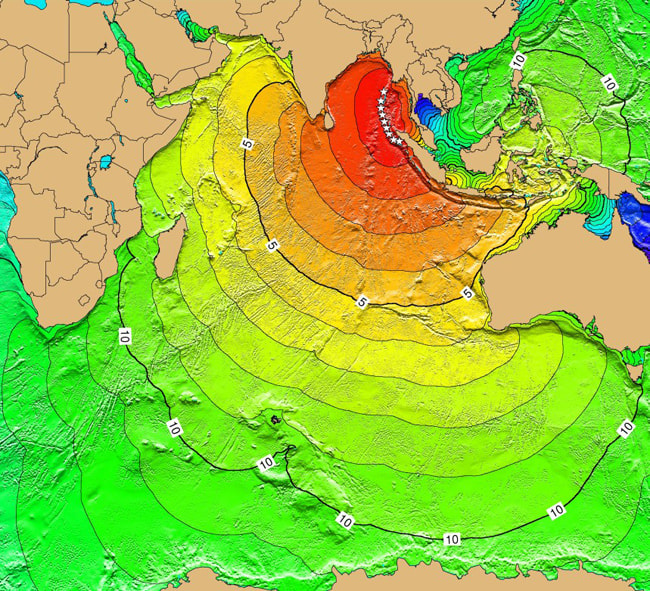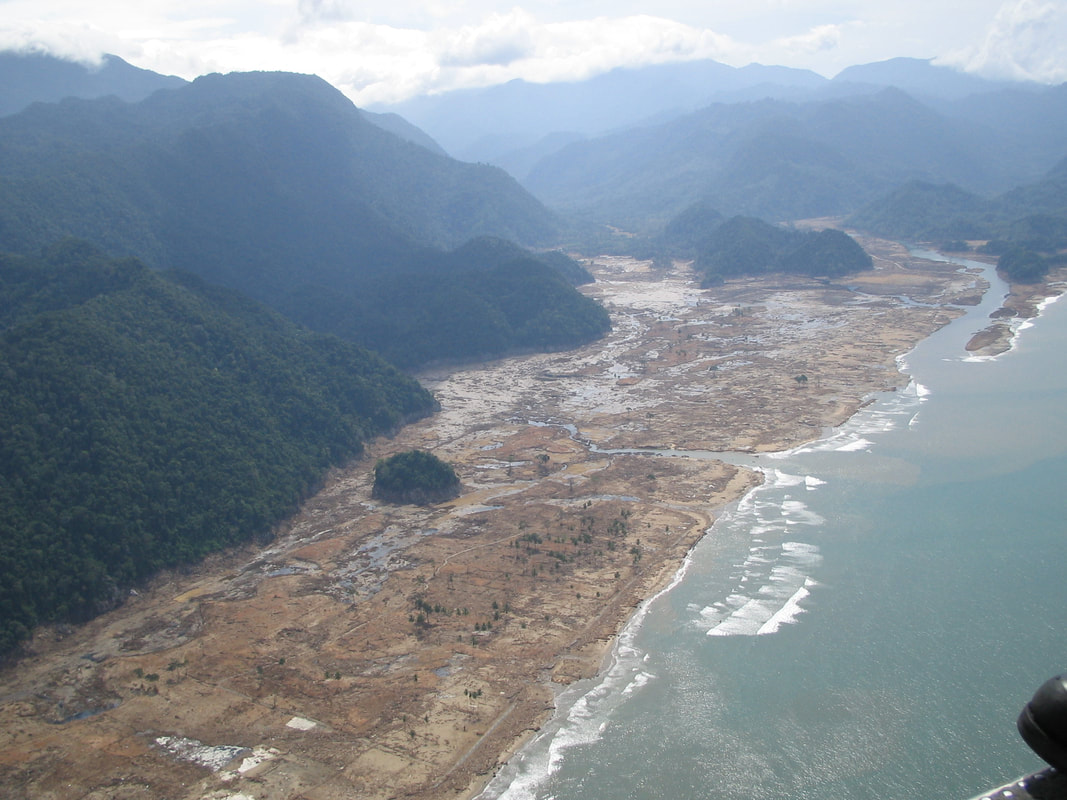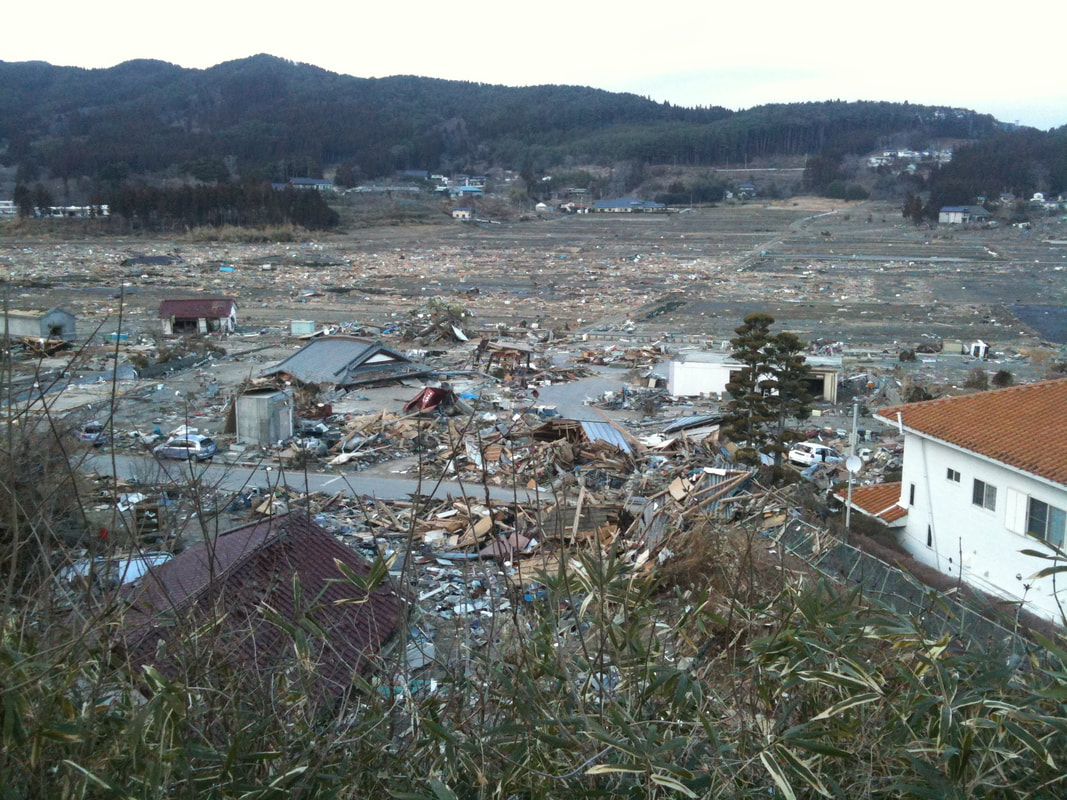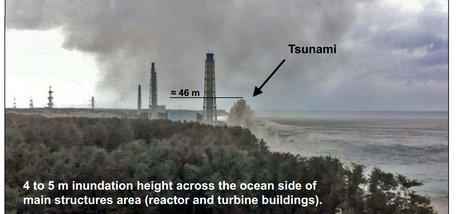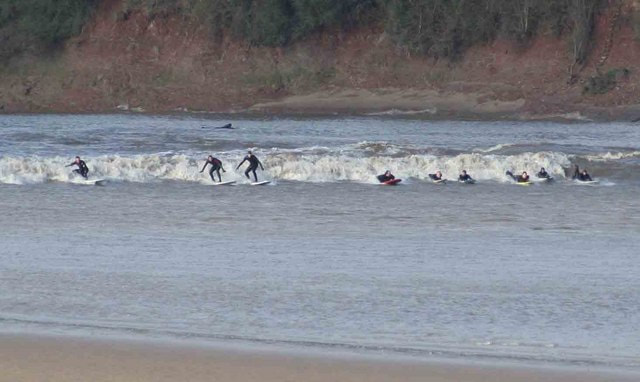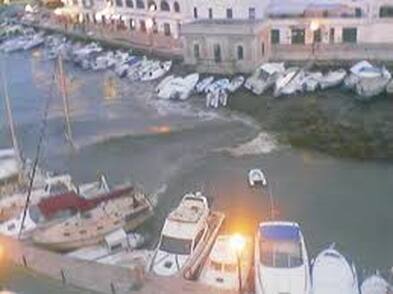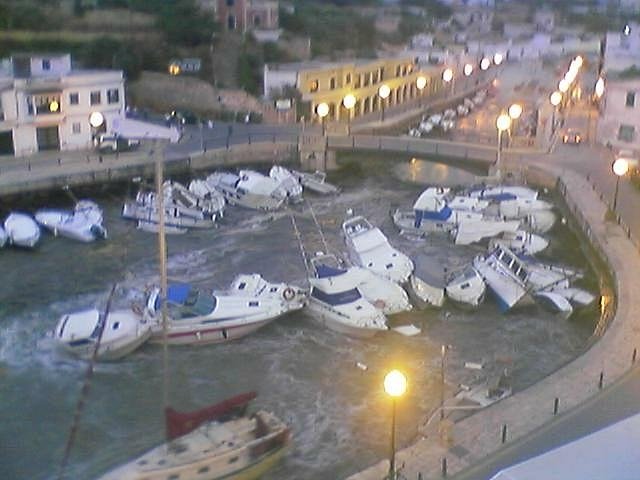|
Tides >>
|
4.5 - Tsunamis
Objectives:
- To be able to describe the formation of a tsunami.
- To understand that the speed of a tsunami over the ocean is really fast.
- To appreciate some of the consequences of a tsunami to coastal communities.
|
|
Animation of Tsunami - from NOAA/Wikipedia
|
Waves are not just caused by the wind. Tsunamis are incredibly destructive waves caused by underwater seismic activity such as earthquakes and landslides down the side of a continental shelf. A few years ago Bermuda experienced a minor tremor due to landslide down the side of the seamount that the island sits on. No major tsunami was formed though - luckily for us. Tsunamis can be very long waves that travel extremely fast across the ocean. When they come ashore, their heights can be enormous. Very little can withstand the onslaught of a fast moving wall of water. Despite their unfortunate common name of "tidal wave" - they are not caused by tidal forces.
In recent years there have been two massive tsunamis that have caused catastrophic destruction and large scale loss of life.
Indonesia - 2004
Hit the coast of Thailand and Indonesia. Nearly 250,000 dead. Maximum height of wave approximately 30 m.
In recent years there have been two massive tsunamis that have caused catastrophic destruction and large scale loss of life.
Indonesia - 2004
Hit the coast of Thailand and Indonesia. Nearly 250,000 dead. Maximum height of wave approximately 30 m.
Japan - 2011
This earthquake, just offshore caused a devastating tsunami that affected the coast of Japan. The widespread death and destruction was quickly overshadowed by the realisation that the tsunami had flooded the generators and pumps at the Fukushima nuclear power station, which ultimately led to three reactor meltdowns.
This earthquake, just offshore caused a devastating tsunami that affected the coast of Japan. The widespread death and destruction was quickly overshadowed by the realisation that the tsunami had flooded the generators and pumps at the Fukushima nuclear power station, which ultimately led to three reactor meltdowns.
|
Image from TEPCO (the Japanese version of BELCO) showing the wave strike the power station. The power station was protected by a seawall of height *** m as that is what engineers predicted the maximum possible tsunami to reach. In reality it was much higher, overtopped the sea wall and flooded the lower levels of the power station - the bits that contained the back up generators and pumps needed to keep water flowing through the reactors. With no cooling water, the reactors overheated and their cores went into meltdown. This caused a radiation leak and a large scale evacuation of the local area. Some radioactive material ended up in the ocean.
|
Tidal Waves
Tidal Bores
Tsunamis are often called "Tidal Waves" - but they are not. Tidal waves are generated by the gravitational forces of the Moon (and Sun). It is likely that the term "tidal wave" came from observation of tidal bores that affect some estuaries. The most famous is in the Severn River in the UK. The inrushing tide is constrained by the narrowing estuary and builds up to form a low wave front. It is most noticeable during spring tides (see Tides).
Tsunamis are often called "Tidal Waves" - but they are not. Tidal waves are generated by the gravitational forces of the Moon (and Sun). It is likely that the term "tidal wave" came from observation of tidal bores that affect some estuaries. The most famous is in the Severn River in the UK. The inrushing tide is constrained by the narrowing estuary and builds up to form a low wave front. It is most noticeable during spring tides (see Tides).
Seiche or Rissaga
One of the strangest phenomenon that I have experienced while sailing. It is a standing wave that can affect a harbour if the wind and tides and geography are just right. Therefore it is literally a "tidal wave". The two ports that I have known it occur are both on the west coasts of the Balearic Islands in the western Mediterranean. Both Andratx and Cuitadella are steep-sided, narrow tapering inlets. If the conditions are just right the water can oscillate. The one that I experienced had a period of about 15 mins and a range of about 2 m. The yacht was berthed in a marina near the middle of the inlet. We were stern to a fixed concrete dock with a gangplank from the stern to the dock. I was loading the boat with supplies for a charter. It slowly dawned on me that I was walking DOWN the gangplank instead of UP it. The next time I went ashore I walked back UP the gangplank to get aboard. I started looking around and over a period of about 5 mins noticed that the boat was moving downwards again. My depth instruments had a graph function and when I switched it over I noticed that the depth readings produced a perfect sine wave. Having been used to no tides in the Med for many years, this stunned me. Some chatter on the docks revealed that it was a RISSAGA, which is the local name for a seiche, a standing wave. Unfortunately, I was preoccupied by the charter guests to observe it as much as I would have liked to. It did cause me problems when I tried to move Imagine out of her berth. As soon as the yacht was most of the way out of her berth, the current induced by the rissaga, pulled the bow away and left the yacht stuck across the anchors and mooring lines of the neighbouring boats. Thanks to the quick thinking of my crew with the fenders, no damage was done - except to my ego!
I found out later that the rissaga caused a lot of damage at the head of the inlet where the wooden fishing fleet were tied up boardside to the wave. A few months later, in the neighbouring island of Menorca, a large rissaga devastated the quayside and boats of Ciutadella.
One of the strangest phenomenon that I have experienced while sailing. It is a standing wave that can affect a harbour if the wind and tides and geography are just right. Therefore it is literally a "tidal wave". The two ports that I have known it occur are both on the west coasts of the Balearic Islands in the western Mediterranean. Both Andratx and Cuitadella are steep-sided, narrow tapering inlets. If the conditions are just right the water can oscillate. The one that I experienced had a period of about 15 mins and a range of about 2 m. The yacht was berthed in a marina near the middle of the inlet. We were stern to a fixed concrete dock with a gangplank from the stern to the dock. I was loading the boat with supplies for a charter. It slowly dawned on me that I was walking DOWN the gangplank instead of UP it. The next time I went ashore I walked back UP the gangplank to get aboard. I started looking around and over a period of about 5 mins noticed that the boat was moving downwards again. My depth instruments had a graph function and when I switched it over I noticed that the depth readings produced a perfect sine wave. Having been used to no tides in the Med for many years, this stunned me. Some chatter on the docks revealed that it was a RISSAGA, which is the local name for a seiche, a standing wave. Unfortunately, I was preoccupied by the charter guests to observe it as much as I would have liked to. It did cause me problems when I tried to move Imagine out of her berth. As soon as the yacht was most of the way out of her berth, the current induced by the rissaga, pulled the bow away and left the yacht stuck across the anchors and mooring lines of the neighbouring boats. Thanks to the quick thinking of my crew with the fenders, no damage was done - except to my ego!
I found out later that the rissaga caused a lot of damage at the head of the inlet where the wooden fishing fleet were tied up boardside to the wave. A few months later, in the neighbouring island of Menorca, a large rissaga devastated the quayside and boats of Ciutadella.
Tides >>
